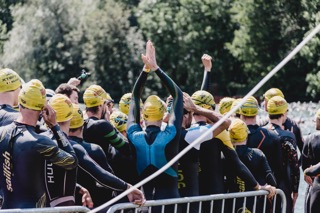A half marathon is quite a step up from a 10km race! Although it is just over double the distance, the fatigue accumulation for the distance is not exactly double.
Step 1
One of the most effective things you can do to prepare yourself for the full 21.1 km (13.1 miles) is to train the majority of the time in your Endurance or Zone 2 training zone. This is the zone that will optimize your fat utilization, improve your capillarization (oxygen-carrying capacity) and increase your heart and lung capacity. If you spend around 80-90%% of your time training in this zone, and the other 10-20% in Zones 3 and 4 you will be well prepared for this distance.
Step 2
Ramp up gradually. Everyone starts where they are at! This sounds so obvious – but not everyone will be honest about this! Make sure your training plan is the best plan for you given your own training, sport, injury, resources available, and life balance history. Humango takes all these aspects into consideration to deliver an optimal personalized training plan – all you have to do is follow along. While training with Humango is the ideal scenario, if you aren’t in a position to customize your training – be honest about your starting point, and check that your training meets you where you are at – not beyond, nor behind.
Step 3
Explore your prehab options. Training for a half marathon can be grueling on your body. Your soft tissue, your joints, and your organs (especially your heart) will be working hard. Pre-hab is all about staying ahead of any injury and building a strong and resilient machine. Choose what fits your lifestyle best, but, basically, anything from the below list will ensure you are incorporating self-care, prehab, and recovery into your routine; massage, hot/cold therapy, rolling, yoga, pilates, strength and functional training, compression boots, trigger point therapy, Physical Therapy (especially if you have a pre-existing or known pre-injury state), sleep and even swimming where the impact is low but total body recruitment is high. Create a specific routine around your pre-hab and schedule it. By scheduling it, the probability of you following through increases, and so does the likelihood of training safely and having a great race day!
Step 4
Practice the race day process every opportunity you have. Every aspect of training can mirror your actual race day. Practice (and refine) your hydration and nutrition plan, pacing, visualization, race day warm-up, and morning routine, and wear what you will be wearing on race day – practice everything in training that you will be implementing on race day. Make your training as similar to racing as possible. Continually learn from your training and refine what went well and what you would do better. Then, when race day arrives, your plan is already well rehearsed – and all you have to do is implement it. Note – don’t be tempted to change your race plan last minute based on something you haven’t practiced. A well-known race day rule is “nothing new on race day.” It’s a good rule 🙂
Step 5
Choose equipment that is right for you. Considering equipment ranging from shoes to shorts and even tops and socks, we are all built differently. What is a good shoe for one athlete for example is not necessarily a good shoe for you. Avoid getting caught up in marketing and hype – do your research and get clear on what you need. It might be that you need a 3mm drop shoe with high stability but your training buddy runs best in a 5mm drop with a high cushion. Take the time to do your “educated buying.” Try out your equipment, get fitted, and talk to the professionals who care about your well-being – not just selling you the next new thing! Be mindful, you can’t always get it right. There might be some trial and error in this process – but you will be continually learning and gathering information as you go, fueling you for better choices in the future.








